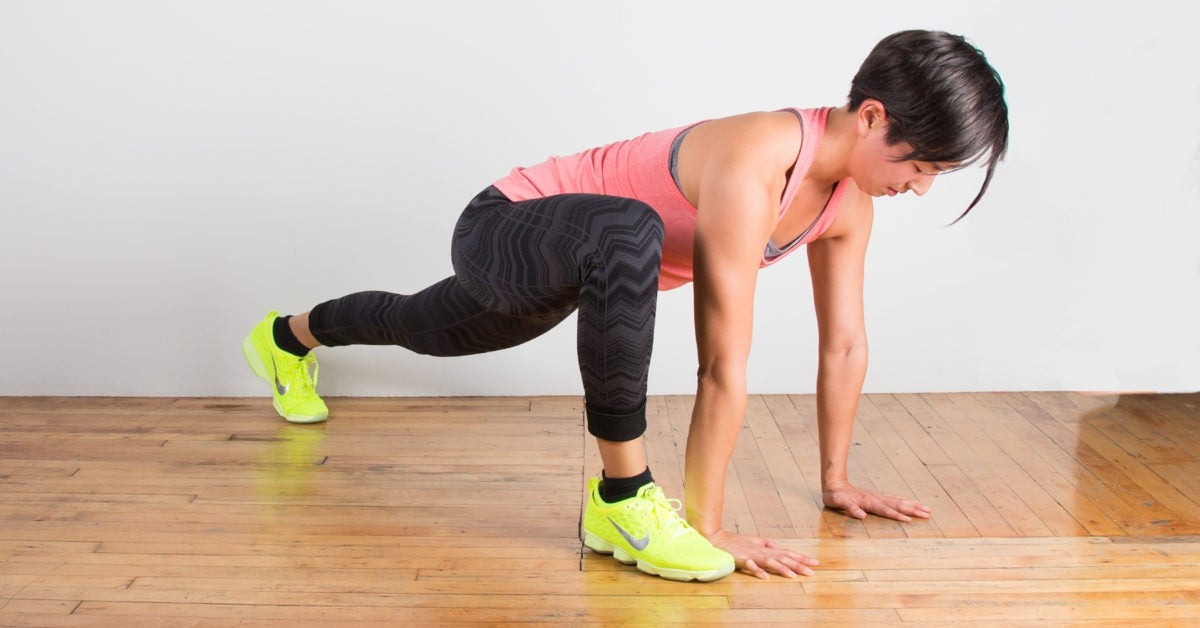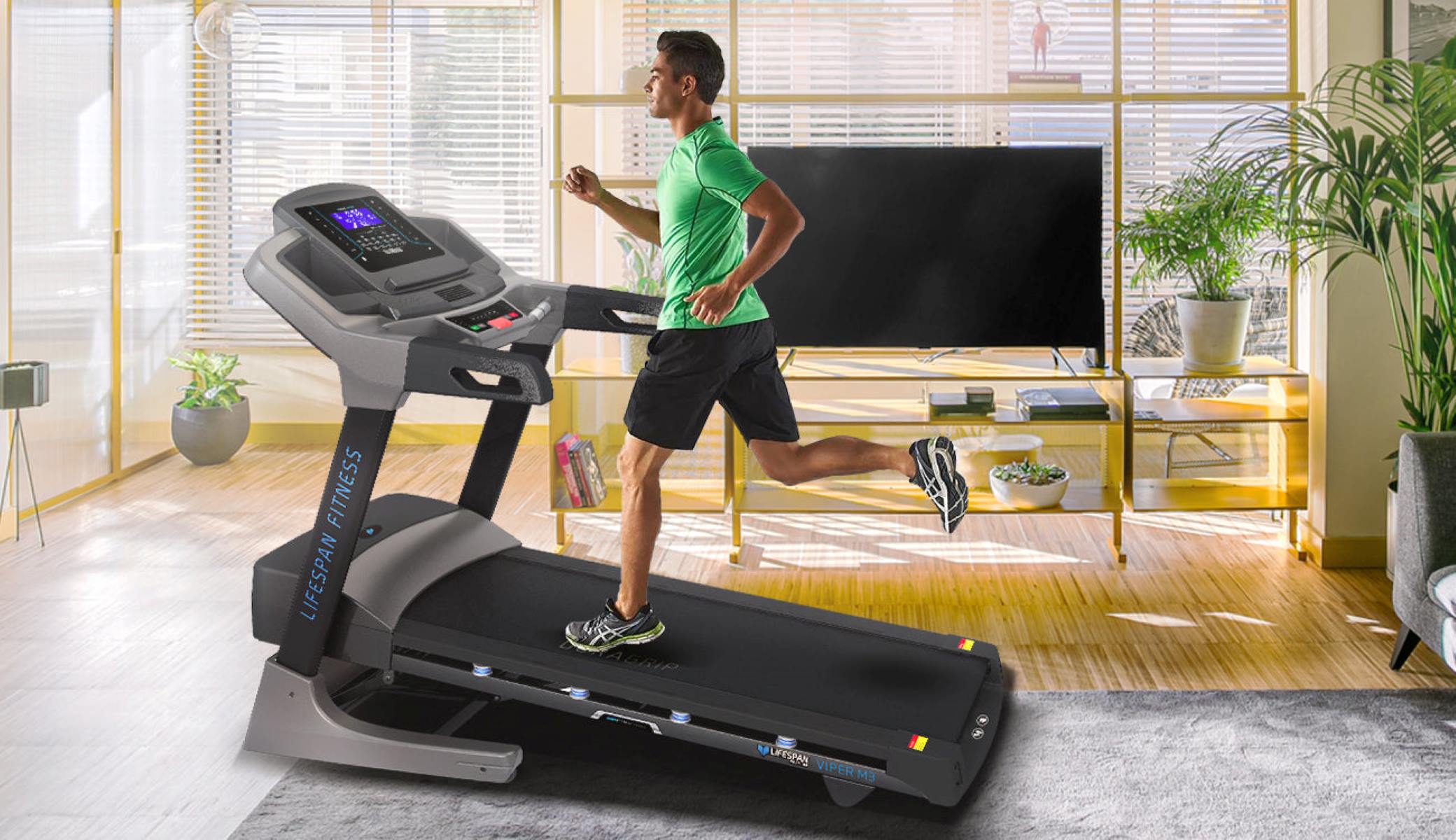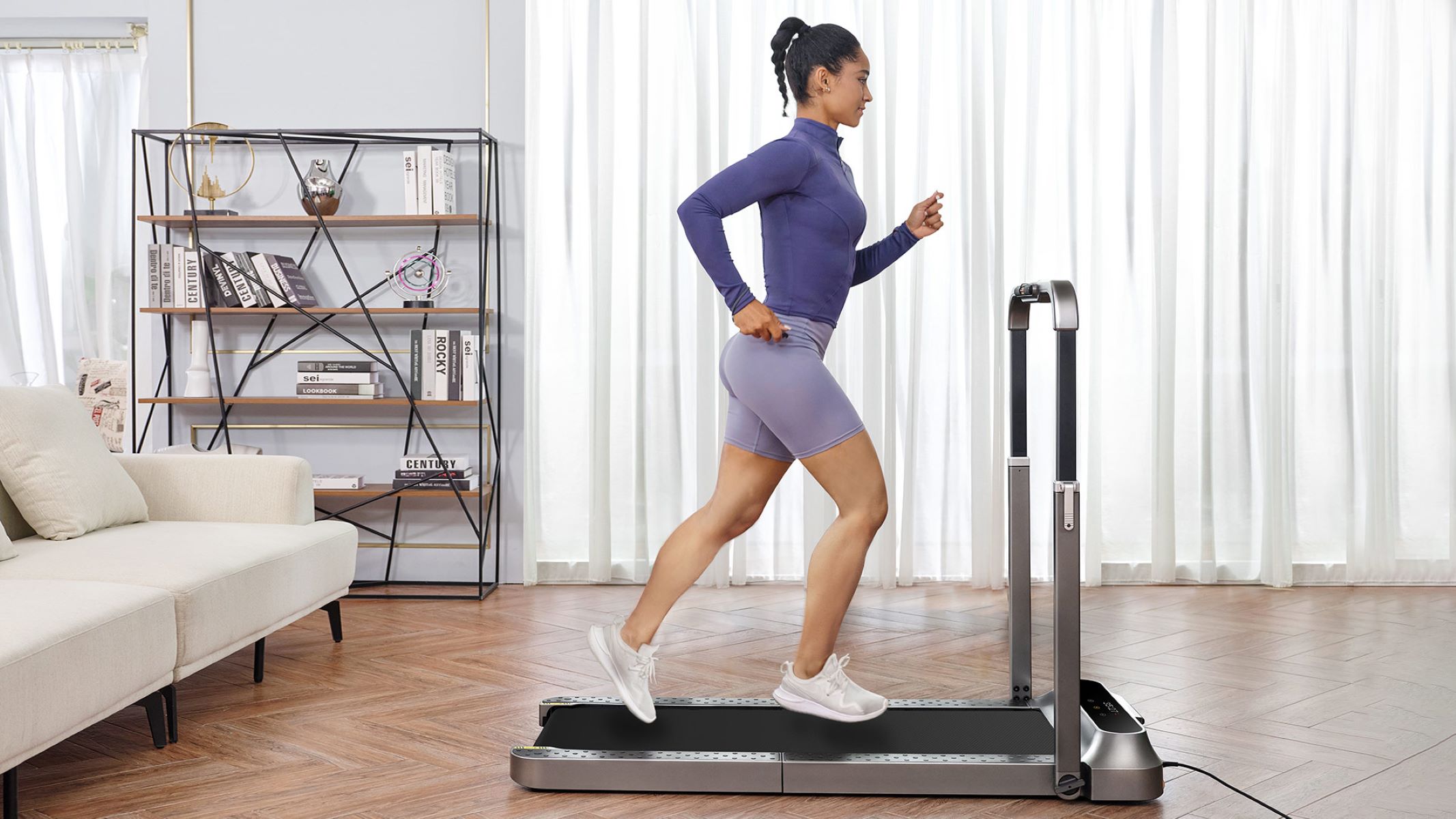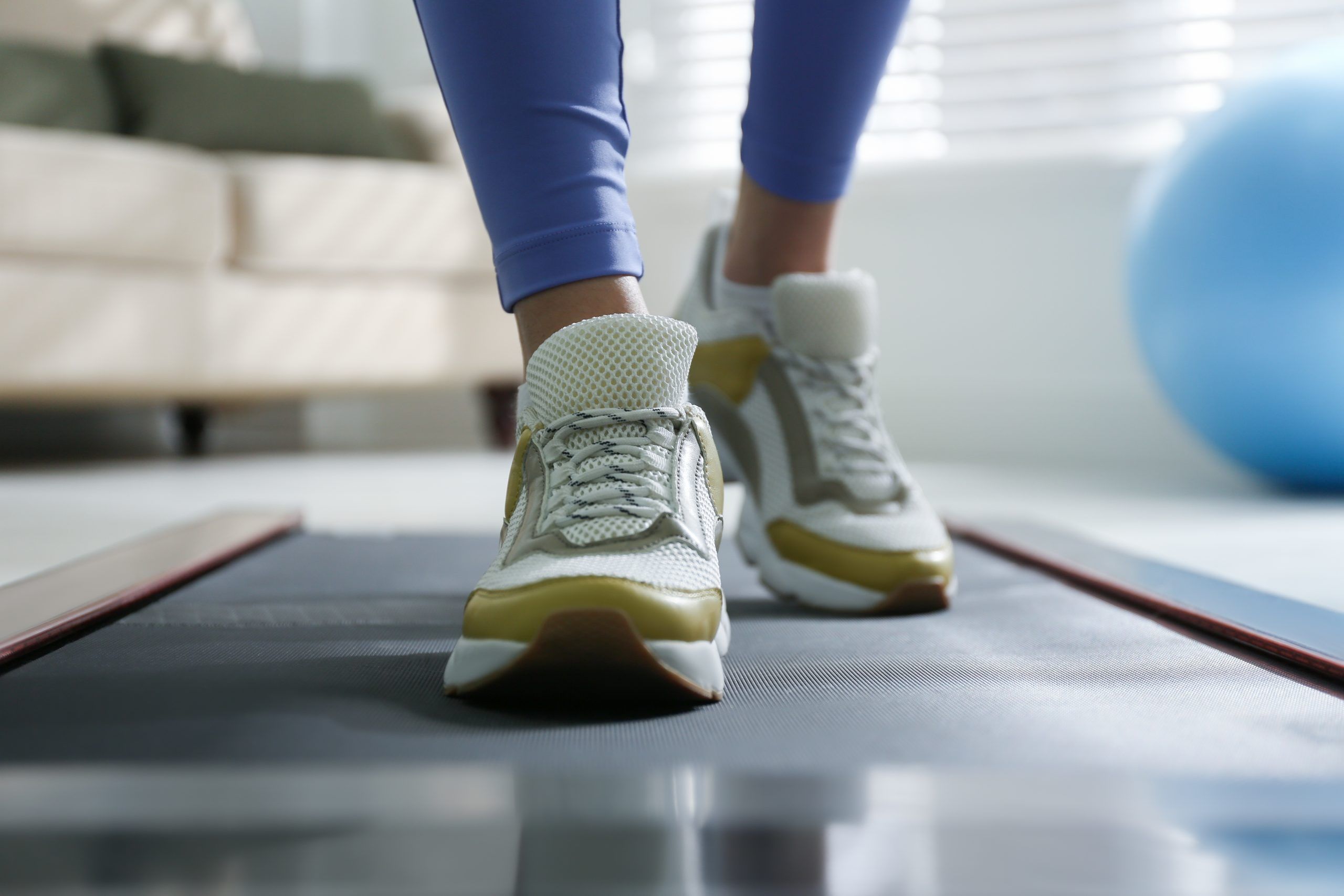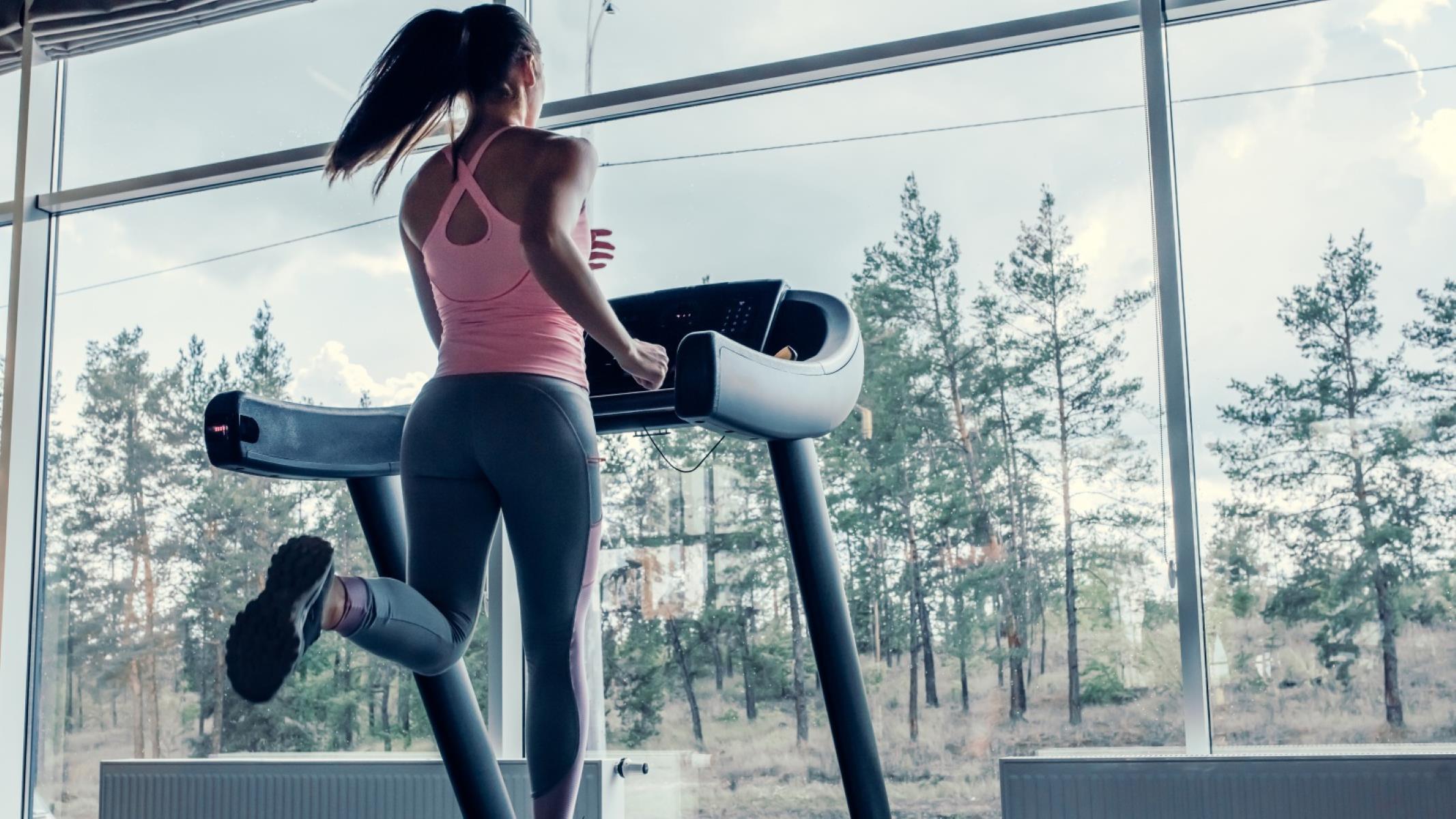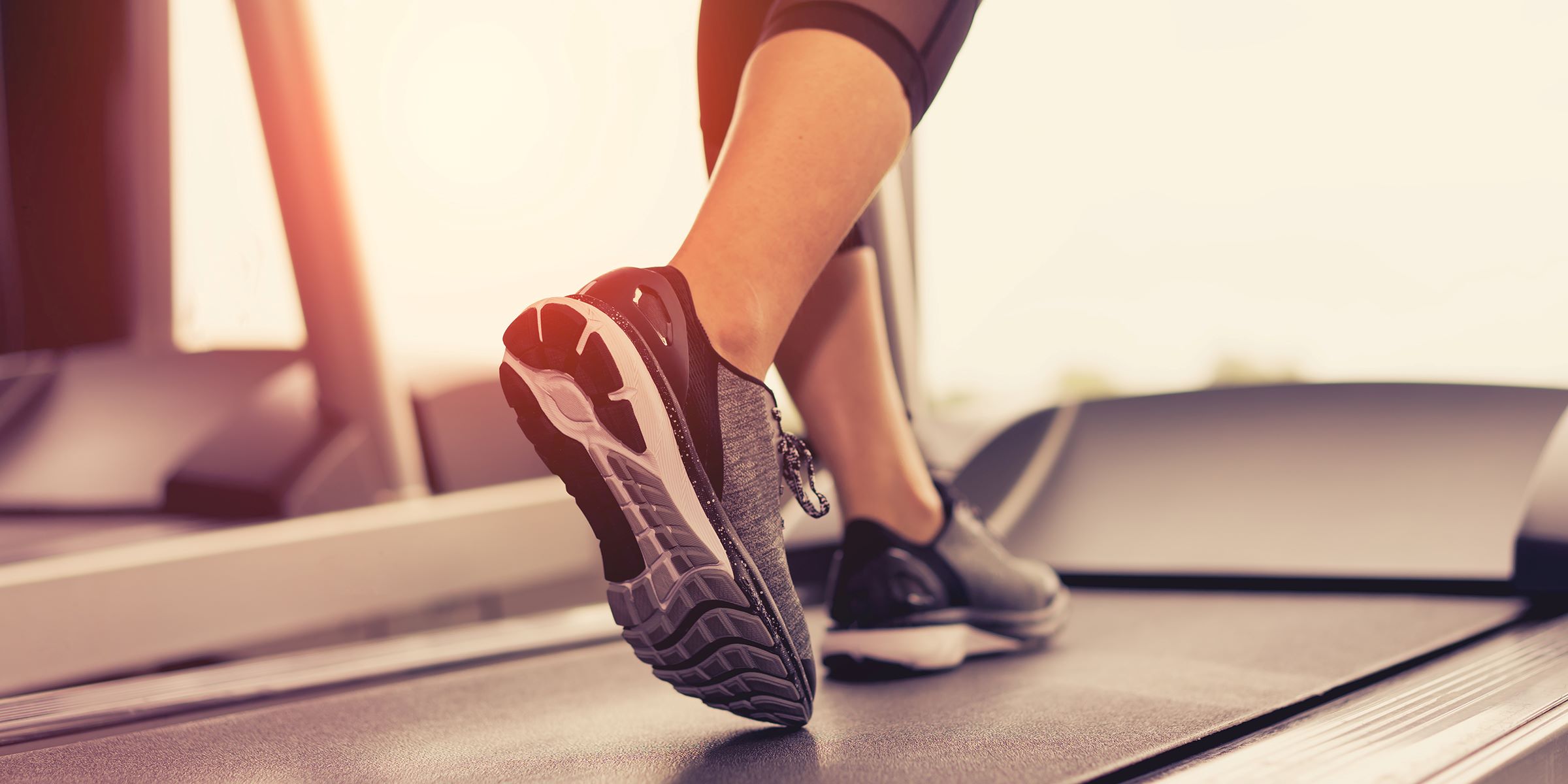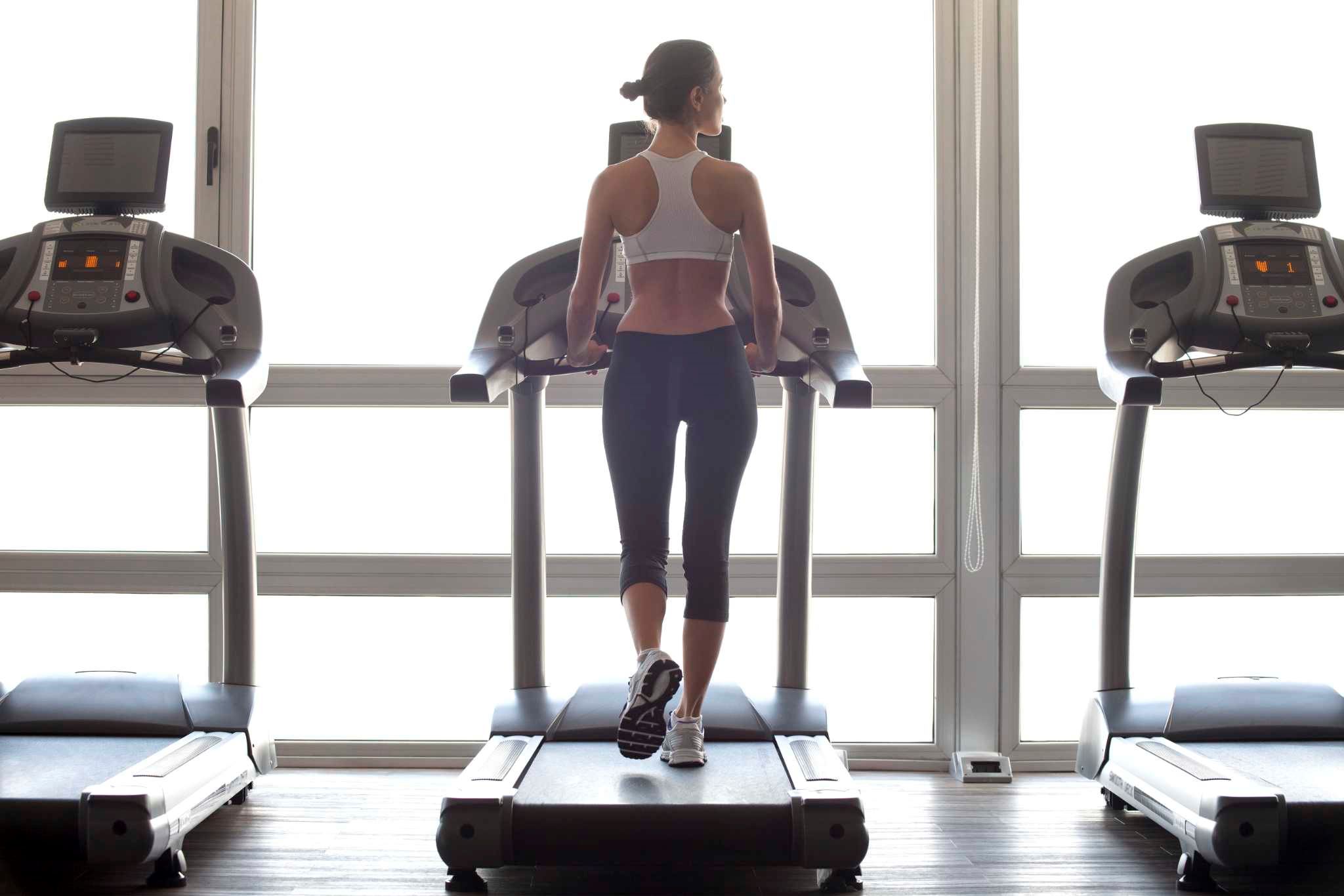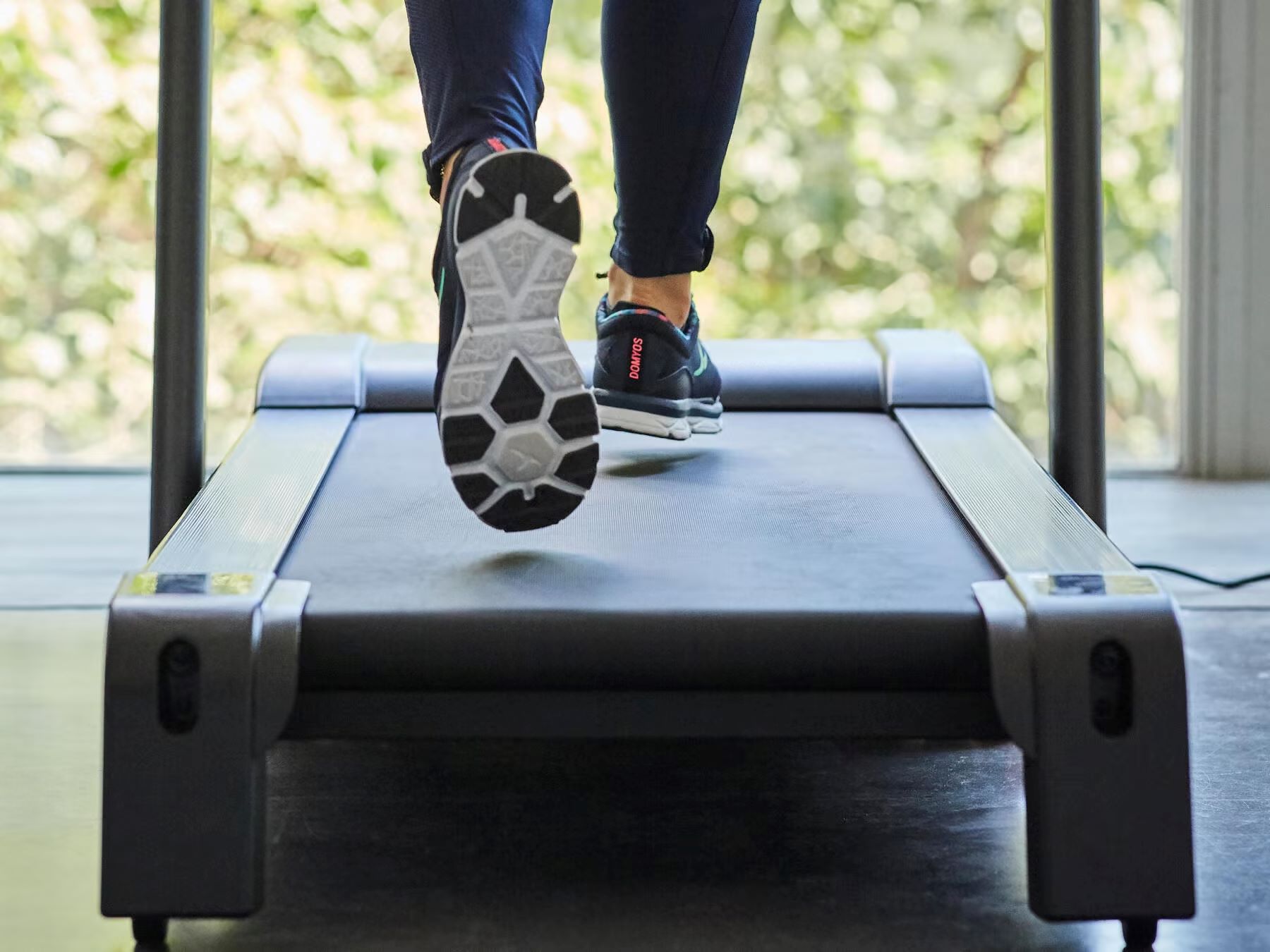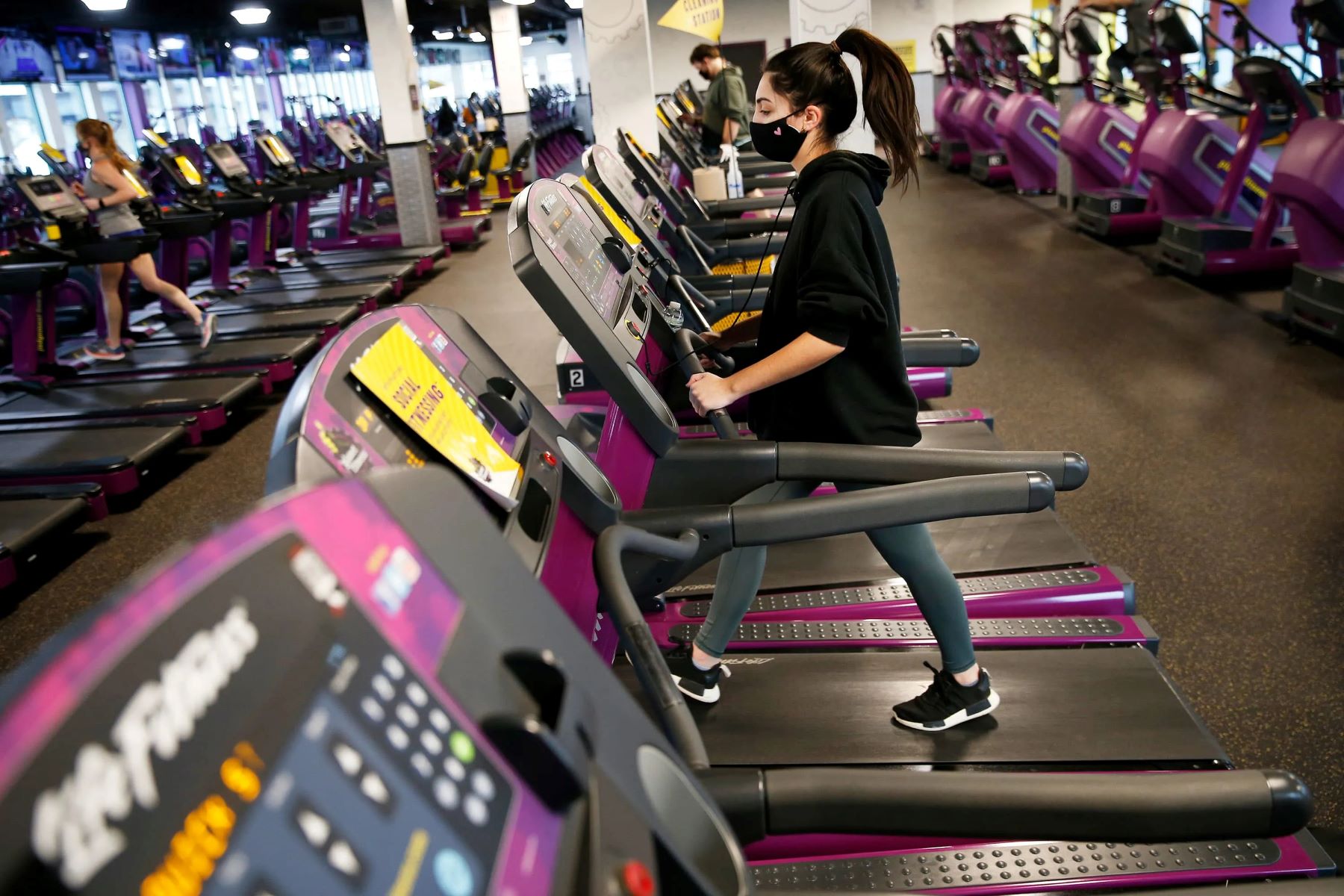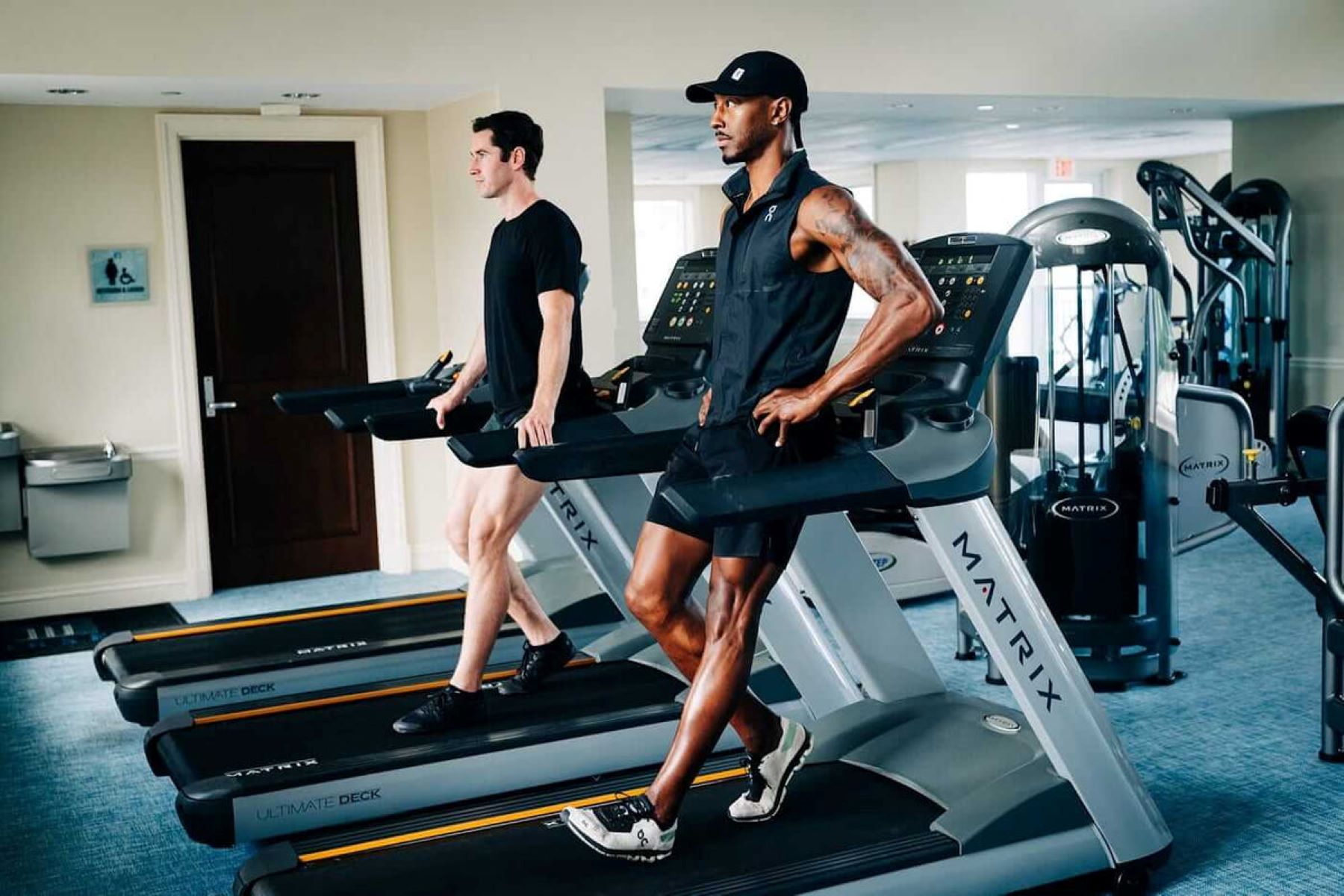

Featured
Why Walk Backwards On A Treadmill
Modified: January 2, 2024
Discover the benefits of featured workouts, including the unique practice of walking backwards on a treadmill. Enhance your fitness routine with this effective and engaging exercise.
Introduction
Walking on a treadmill has long been a popular form of exercise. However, have you ever considered walking backwards on a treadmill? While it may seem counterintuitive, walking backwards can offer a unique and effective workout experience. Not only does it target different muscles than forward walking, but it also provides various benefits for balance, coordination, and intensity.
Walking backwards on a treadmill can be incorporated into your regular workout routine to add diversity and challenge. It activates muscles in a different way and allows you to work on different aspects of your fitness, such as coordination and balance. In this article, we will explore the benefits of walking backwards on a treadmill, the muscles it targets, safety precautions to consider, and tips for incorporating backward walking into your routine.
Walking backwards on a treadmill may not be as common as forward walking, but it provides a range of benefits that can enhance your overall fitness. It increases the challenge and intensity of your workout, while also targeting different muscles and improving your balance and coordination. So, if you’re looking to add variety and maximize the benefits of your treadmill workout, consider giving backward walking a try.
Benefits of Walking Backwards on a Treadmill
Walking backwards on a treadmill offers a range of benefits that can elevate your workout routine and help you achieve your fitness goals. Let’s explore some of the key advantages:
- Engages Different Muscles: Walking backwards targets muscles that are not typically worked during forward walking. It primarily activates your glutes, hamstrings, and lower leg muscles, including the calves and shins. By incorporating backward walking into your routine, you can ensure a well-rounded workout that targets a wider range of muscles.
- Improves Cardiovascular Fitness: Walking backwards can increase your heart rate and provide an effective cardiovascular workout. By challenging your body in a novel way, you can enhance your cardiovascular endurance and burn more calories.
- Enhances Balance and Coordination: Walking backwards on a treadmill requires a greater level of balance and coordination compared to forward walking. This can help improve your proprioception (awareness of your body’s position in space) and sharpen your motor skills. As a result, you may experience improved stability and better overall athletic performance.
- Targets Core Muscles: Walking backwards engages your core muscles to a greater extent. These muscles play a crucial role in maintaining stability and supporting your spine. By strengthening your core through backward walking, you can improve your posture, reduce the risk of injuries, and enhance your overall body strength.
- Offers Low-Impact Exercise: Walking backwards on a treadmill is a low-impact exercise that puts less stress on your joints compared to high-impact activities like running. This makes it a suitable option for individuals with joint pain, arthritis, or those recovering from injuries. It allows you to engage in a challenging workout while minimizing the risk of joint discomfort.
By incorporating backward walking into your treadmill routine, you can reap these benefits and take your fitness journey to new heights. It not only adds variety to your workouts but also helps you target muscles that may not be effectively engaged during forward walking. So, lace up your sneakers, step onto the treadmill, and give walking backwards a try!
Muscles Targeted by Walking Backwards
Walking backwards on a treadmill is a great way to engage and strengthen different muscle groups in your body. Here are the primary muscles that are targeted during backward walking:
- Glutes: Walking backwards activates the gluteal muscles, including the gluteus maximus, gluteus medius, and gluteus minimus. These muscles are responsible for hip extension and play a vital role in stabilizing the pelvis and legs during movement.
- Hamstrings: The hamstrings, located at the back of the thigh, are activated when walking backwards. These muscles are responsible for knee flexion and hip extension, providing stability and power during each step.
- Calves: Walking backwards engages the calf muscles, specifically the gastrocnemius and soleus muscles. These muscles work to control ankle movement and provide the necessary push-off during each step.
- Shins: The muscles in the front of the lower leg, including the tibialis anterior, are activated during backward walking. These muscles help to lift the foot off the ground and control dorsiflexion.
- Quadriceps: While the quadriceps are primarily activated during forward walking, walking backwards still requires some engagement of these muscles. The quadriceps play a key role in knee extension, providing stability and control.
- Core Muscles: Walking backwards challenges your core muscles, including the abdominals and the muscles along the spine. These muscles work to stabilize your body and maintain balance throughout the movement.
By incorporating backward walking into your treadmill routine, you can effectively target and strengthen these muscles. This balanced activation of both the lower body and core muscles can lead to improved overall strength, stability, and functional movement.
Remember, it’s important to maintain proper form and posture while walking backwards on a treadmill. Engage your core, keep your back straight, and land on the balls of your feet. Gradually increase the duration and intensity of your backward walking sessions to continuously challenge yourself and optimize the benefits.
So, if you’re looking to target and strengthen your glutes, hamstrings, calves, and core muscles, walking backwards on a treadmill is a great addition to your fitness routine.
Improving Balance and Coordination
Walking backwards on a treadmill is not only a great way to target specific muscle groups but also an effective method for improving balance and coordination. Here’s how backward walking can enhance these crucial elements of physical fitness:
- Stimulates Proprioception: Proprioception refers to your body’s ability to sense its position, movement, and spatial orientation. Walking backwards challenges proprioceptive feedback as you have to rely on different cues to maintain balance and coordination. This increased proprioceptive demand can improve your body’s overall spatial awareness.
- Activates Stabilizer Muscles: Walking backwards engages the stabilizer muscles to a greater extent. These are the muscles responsible for maintaining balance and stability, such as the muscles in your hips, ankles, and core. As you challenge these muscles through backward walking, they become stronger and more proficient at maintaining balance, resulting in improved coordination.
- Enhances Neurological Connections: Walking backwards requires your brain to communicate with your muscles in a different way compared to forward walking. By practicing backward walking on a regular basis, you can enhance the neurological connections and pathways between your brain and muscles, leading to improved coordination and motor skills.
- Fosters Mental Focus: Walking backwards on a treadmill requires focused attention and concentration. You have to be mindful of your body’s movement, form, and the presence of any potential obstacles. This enhanced mental focus can transfer to other areas of your life, improving your overall cognitive abilities.
- Challenges Multidirectional Movement: By incorporating backward walking into your treadmill routine, you introduce a multidirectional movement pattern. Moving in different directions challenges your body to adapt and coordinate movements in various planes, leading to enhanced overall coordination and agility.
Improving your balance and coordination through backward walking on a treadmill can have far-reaching benefits. It can help you in daily activities that require stability, such as walking on uneven surfaces or participating in sports that involve multidirectional movements.
When incorporating backward walking into your treadmill routine, start with shorter durations and lower speeds until you feel comfortable and confident. Gradually increase the duration and intensity to continue challenging your balance and coordination. Always prioritize safety and listen to your body if you experience any discomfort or instability.
So, if you’re looking to enhance your balance, coordination, and overall mind-body connection, consider adding backward walking on a treadmill to your fitness routine.
Increasing the Intensity of Your Workout
If you’re looking to add a new level of challenge to your treadmill workout, walking backwards is an excellent way to increase the intensity. Here are some reasons why backward walking can elevate your exercise routine:
- Higher Calorie Burn: Walking backwards requires more effort and engages different muscle groups compared to forward walking. As a result, it can increase your heart rate and calorie burn. This extra intensity can be beneficial for those looking to lose weight or increase their overall cardiovascular fitness.
- Enhanced Muscle Activation: When you walk backwards, your muscles have to work harder to control your movement. This increased demand on your muscles leads to greater muscle activation and a more intense workout. It can help build strength, endurance, and overall muscle tone.
- Improved Cardiovascular Endurance: Walking backwards challenges your cardiovascular system, forcing it to adapt and become more efficient. By increasing the intensity of your workout, you can improve your cardiovascular endurance over time, allowing you to undertake more vigorous activities and exercise for longer durations.
- Variation and Overcoming Plateaus: Incorporating backward walking into your treadmill routine introduces a new stimulus to your body. This variation is beneficial for breaking through fitness plateaus and preventing boredom. Your body constantly adapts to the demands placed upon it, so by changing up your workout with backward walking, you can continue to see progress and improvements.
- Dynamic Balance Challenge: Walking backwards on a treadmill requires extra focus and balance, making it a great exercise for improving your stability and coordination. As you navigate the reverse movement pattern, your body’s balance mechanisms are activated, challenging your core muscles and improving your overall balance control.
There are several ways to increase the intensity of your backward walking workout. Start by gradually increasing the speed and incline on your treadmill. You can also incorporate intervals of backward walking with periods of forward walking or jogging to further challenge yourself. Additionally, adding light hand weights or ankle weights can provide an extra level of resistance.
It’s important to listen to your body and not push yourself too hard too quickly. Start with shorter durations and lower intensities and gradually work your way up as your fitness level improves. Remember to maintain proper form, engage your core, and focus on landing softly on the balls of your feet to minimize the risk of injury.
By incorporating backward walking into your routine and increasing the intensity of your workout, you can take your fitness journey to new heights. Embrace the challenge, push your limits, and enjoy the rewarding benefits of an intensified treadmill workout.
Safety Precautions for Walking Backwards on a Treadmill
While walking backwards on a treadmill can provide a unique and effective workout, it’s essential to prioritize safety to prevent injuries. Here are some important safety precautions to keep in mind:
- Start Slowly: If you’re new to walking backwards on a treadmill, start at a slow pace. Allow your body to adjust to the movement and the new demands placed on your muscles and coordination. Gradually increase the speed as you become more comfortable and confident.
- Maintain Proper Form: Focus on maintaining good posture and form while walking backwards. Keep your back straight, engage your core muscles, and aim to land on the balls of your feet with each step. Avoid leaning too far forward or backward, as this can compromise your balance and increase the risk of falls.
- Use Handrails for Support (if needed): If you feel unsteady or need extra support, it’s acceptable to use the handrails of the treadmill. However, try to wean yourself off reliance on the handrails gradually as your balance and coordination improve.
- Be Mindful of Your Surroundings: When walking backwards on a treadmill, be aware of your surroundings. Pay attention to the position of the treadmill in the room and ensure you have adequate space around you. Avoid distractions and keep your focus on your movement and form.
- Choose Suitable Footwear: Wear proper athletic footwear that provides adequate support and cushioning. Opt for shoes with good traction to prevent slipping. Avoid walking in socks or barefoot on the treadmill, as this can increase the risk of injury.
- Stay Hydrated: As with any exercise, it’s important to stay hydrated while walking backwards on a treadmill. Keep a water bottle nearby and take regular sips to maintain hydration levels throughout your workout.
- Listen to Your Body: Pay attention to any discomfort or pain during your backward walking workout. If you experience sharp or persistent pain, it’s essential to stop and seek medical advice. Pushing through pain can lead to further injury and setbacks.
- Consult with a Healthcare Professional: If you have any underlying health conditions or concerns, it’s recommended to consult with a healthcare professional before adding backward walking on a treadmill to your exercise routine. They can provide tailored advice and ensure it is safe for you to engage in this activity.
By following these safety precautions and using common sense, you can minimize the risk of injuries and enjoy a safe and effective backward walking workout on the treadmill.
Tips for Incorporating Backward Walking into Your Treadmill Routine
Incorporating backward walking into your treadmill routine can add variety and challenge to your workouts. Here are some helpful tips to make the most out of your backward walking sessions:
- Warm-up Properly: Before starting your backward walking workout, it’s important to warm up your muscles and joints. Spend 5-10 minutes doing dynamic stretches or light cardiovascular exercises to increase blood flow and prepare your body for the workout.
- Start with Short Intervals: If you’re new to backward walking, begin with short intervals of 1-2 minutes and gradually increase the duration as you gain confidence and strength. Be patient with yourself and listen to your body’s feedback.
- Focus on Form and Technique: Pay close attention to your form while walking backwards. Keep your back straight, engage your core muscles, and maintain a natural walking motion with controlled steps. Avoid looking down at your feet and instead, keep your gaze forward to maintain balance and stability.
- Gradually Increase Speed and Incline: Once you are comfortable with the basic backward walking motion, you can start gradually increasing the speed and incline on the treadmill to add intensity. However, be cautious and ensure you maintain good form at higher speeds or inclines.
- Combine Forward and Backward Walking: Mix up your treadmill routine by alternating between forward and backward walking intervals. This variation challenges different muscle groups and adds an element of surprise to your workout, keeping it interesting and engaging.
- Add Interval Training: Incorporate interval training into your backward walking routine by alternating between periods of moderate-paced walking and short bursts of faster-paced walking or jogging. This can further enhance your cardiovascular fitness and calorie burn.
- Use Visual Aids (if available): If your treadmill has a mirror or a video screen in front of it, use it to check your form and make sure you’re maintaining the correct posture while walking backwards. This visual feedback can help you improve your technique.
- Listen to Music or Watch TV: Walking backwards on a treadmill can be mentally challenging. Streaming your favorite music or watching your favorite TV shows or movies can help you stay motivated and distract from the inherent difficulty of the movement.
- Track Your Progress: Keep a record of your backward walking sessions to monitor your progress. Note the duration, speed, and any variations or challenges you incorporated. Regularly review your records to see how far you’ve come and set new goals.
- Stay Consistent: Consistency is key when it comes to seeing results from your treadmill workouts. Aim to incorporate backward walking into your routine at least two to three times a week to reap the full benefits.
Remember to always prioritize safety and listen to your body. If at any time you feel pain or discomfort, stop the exercise and seek medical advice if necessary. With practice and persistence, backward walking on a treadmill can become a rewarding and effective addition to your fitness routine.
Conclusion
Walking backwards on a treadmill offers a host of benefits, such as engaging different muscle groups, improving balance and coordination, increasing workout intensity, and providing a low-impact exercise option. By incorporating backward walking into your treadmill routine, you can add variety to your workouts and challenge your body in new ways.
Walking backwards targets muscles that are not typically worked during forward walking, such as the glutes, hamstrings, and calves. It also activates stabilizer muscles and improves core strength. Furthermore, backward walking enhances balance and coordination through increased proprioceptive feedback and challenges multidirectional movement patterns.
To ensure a safe and effective backward walking workout, it’s important to practice proper form, warm up adequately, and slowly increase the speed and intensity over time. Listening to your body, using support as needed, and staying hydrated are also crucial for a successful session.
Incorporating backward walking into your treadmill routine can be done through a combination of forward and backward intervals, interval training, and monitoring your progress. Remember to stay consistent and give yourself time to adapt and improve.
So, if you’re looking to take your treadmill workout to the next level, consider adding backward walking as a challenging and effective exercise option. Embrace the benefits it offers, strengthen different muscle groups, and improve your balance and coordination along the way. Lace up your shoes, step onto the treadmill, and start walking backwards to reap these rewards.
